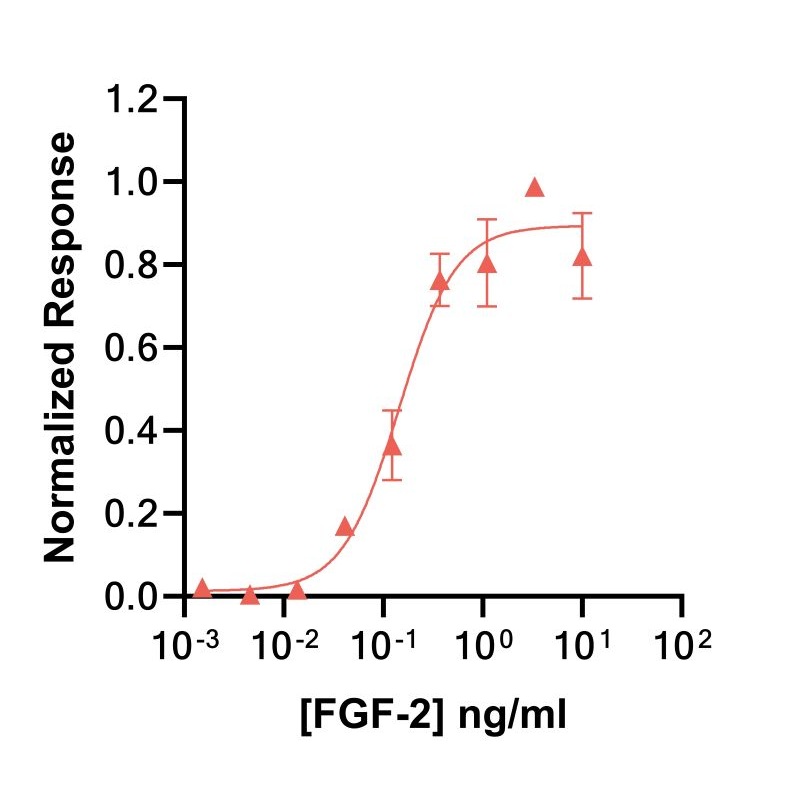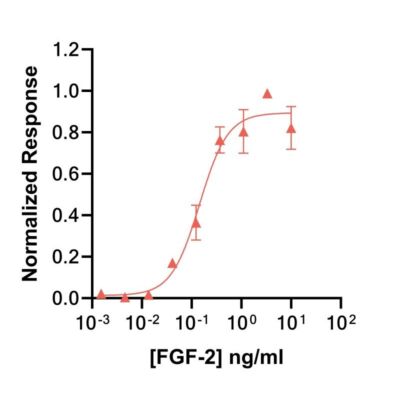Recombinant eel FGF-2 (145 aa) protein (Qk106-FG)
Recombinant eel FGF-2 protein 145 aa (bFGF/basic FGF) for the development of optimized serum-free culture media for species-specific European (Anguilla anguilla), Japanese (Anguilla japonica) and American (Anguilla rostrata) eel in cellular agriculture protocols and veterinary research applications. This shorter form of FGF-2 is used in comparative cell culture media optimization studies alongside Qk107-FG, the 154 aa form of eel FGF-2.
FGF-2 is used extensively in the maintenance and proliferation of induced pluripotent (iPSC) and embryonic stem cells (ESC) and for enhancement of proliferation in primary eel cell culture. Receptor binding affinity and efficacy may differ depending on each species. Using a species-specific growth factor enhances receptor binding affinity, resulting in a lower concentration required in culture.
Qkine Eel FGF-2 is a high purity 16.4 kDa FGF-2 / bFGF protein, animal origin-free (AOF) and carrier-protein free (CF).
Qkine high quality food grade products are intended solely for use as food processing aids, ex vivo cell manufacturing and research use. Not for direct human consumption, therapeutic or diagnostic use.
The authorization of novel foods, including the use of growth factors as food processing aids, is regulated by regional government agencies. The use of our products as food processing aids in novel foods requires the end-user to obtain the necessary regulatory approvals.







What others are saying
There are no contributions yet.